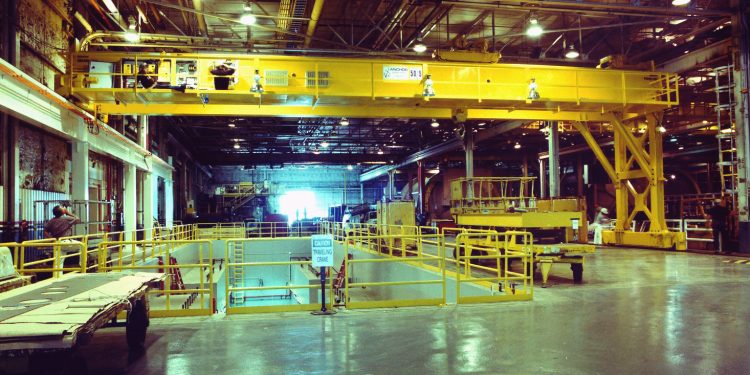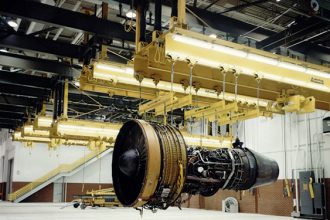Does Your Overhead Crane System Or Its Components Need To Be Replaced? Look For These Six Signs

Designed, engineered, and manufactured to move large, heavy, and bulky items horizontally throughout an operation’s empty space above floor-based equipment and processes — or outdoors — overhead cranes are complex systems that incorporate multiple components to lift, lower, and transport their payload. They consist of a hoist to lift and lower the load that is mounted to a trolley that moves side to side across a bridge beam. For front to back travel the bridge beam, which rides on end trucks at each end of the beam, glides over one (or more) horizontal girders.
Cranes come in a broad range of design types to accommodate different applications. They include single girder, double girder, box girder, truss girder, I-beam, straddle, tower, and stacker types. Regardless of the type of crane installed in an operation, the proper functioning of each of its components is critical to preserve the safety and efficiency of the personnel within the building.
To confirm that, all cranes should be routinely inspected at a variety of intervals, including:
- Prior to use at the start of a shift
- Frequently (monthly for normal use; weekly for heavy use; and daily for severe use)
- Periodically (yearly for normal service; semi-annually for heavy service; or quarterly for severe service application)
Sometimes a crane inspection will reveal damage that can be repaired. In this case, the crane (or damaged component part) should be removed from service and not used until the repair is completed. However — should a repair prove insufficient — the system or component will need to be upgraded or replaced with a new one. To help crane owners make that determination, here are X key signs to look for:
- Decrease in reliability. When a crane or its components routinely fail to operate, productivity drops while operational and maintenance costs rise, particularly as emergency repairs can be expensive. If production schedules — and safety — are repeatedly being negatively impacted by unexpected failures, upgrade or replacement options should be considered.
- Physical damage and/or extreme wear. When clear physical damage to any crane component is observed, it should be inspected immediately by a qualified professional to determine if it can be repaired or must be replaced. Likewise, all components have a lifespan based upon hours of usage. Once that limit has been exceeded, refurbishment or replacement should be considered. Most crane owner’s manuals describe the signs of excessive wear among components.
- Recommendation from a professional inspector. In addition to the pre-shift inspections performed by the operator, more in-depth frequent or periodic inspections shall be conducted by in-house maintenance technicians, manufacturers’ service representatives, or an independent crane inspection professional. These evaluations may reveal a problem not visible to an operator. Excessive component wear, cracks, distortion, warping, or other internal damage — or any other part that displays indications of potential failure — will be noted by the inspector. Based on that assessment, the crane system or its components may be deemed beyond reasonable repair, and replacement recommended.
- Excessive repair costs. From a cost perspective, when the expenses associated with maintaining the crane (parts, service, or a combination of both) so that it continues to function in a safe and efficient manner exceeds 75% of the cost of a new system, it’s time to assess replacement or modernization options. Working with the crane manufacturer or service provider can help to plan ahead for a replacement or upgrade at an optimal time for the operation. A newer model will be supported by the manufacturer, have replacement parts more readily available, and will likely be backed by a warranty for a period of time, allowing it to deliver better value than the previous system.
- Obsolete parts. In some cases, cranes and their components have been so well maintained and performed so well for a long period of time they outlive their manufacturer’s ability to support them. That is, replacement parts are no longer readily available or easily sourced. If the facility’s maintenance department has resorted to searching eBay for mechanical or electrical components, it’s time to investigate retrofitting options. In some situations, new standard components can address this issue without a complete system replacement.
- Application change. For the most part, an entire crane system typically is not replaced unless the process or handling application is undergoing a significant change. Such factors include a dramatic shift in load capacity, utilization frequency, or travel distance.
Looking for more information on the safe use and maintenance of overhead crane systems? Available to answer any questions, CMAA members represent the industry’s leading suppliers of overhead crane systems. With the combined experience of more than 30,000 crane installations in North America over the last decade, CMAA members are committed to providing products focused on both safety and innovation. Additionally, the group offers a variety of resources — including buyers’ guides, engineering specifications, OSHA Alliance safety tip and fact sheets, inspection and maintenance checklists, safety seminars and more — via its website at www.MHI.org/CMAA.



